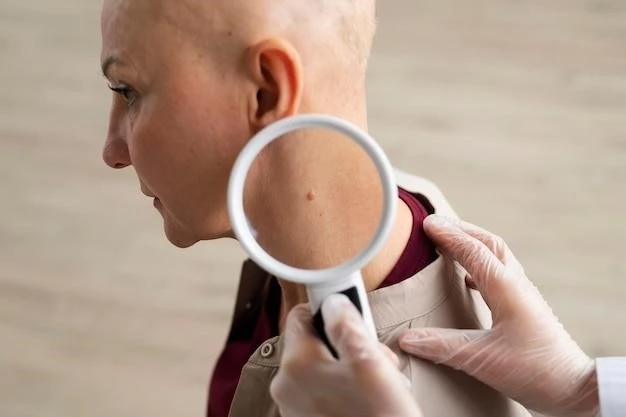Overview of Congenital Rubella Syndrome
Women who acquire rubella during pregnancy can transmit the virus to their fetus, causing miscarriage, stillbirth, or birth defects. Congenital Rubella Syndrome (CRS) occurs when an unborn baby is infected with the rubella virus via maternal-fetal transmission.
Rubella, also known as German Measles, is a viral infection that can have severe consequences when contracted by pregnant women. When the rubella virus infects a fetus during pregnancy, it can result in Congenital Rubella Syndrome (CRS), leading to various birth defects and health issues in the newborn.

Transmission and Effects on Fetus
When a pregnant woman contracts rubella, the virus can be transmitted to the developing fetus, leading to potential birth defects and health issues in the newborn. Maternal-fetal transmission plays a crucial role in the impact of rubella infection during pregnancy.
Definition and Causes
Rubella, also known as German Measles, is a viral infection that has significant implications when contracted by pregnant women. The development of Congenital Rubella Syndrome (CRS) in newborns is directly linked to maternal-fetal transmission of the rubella virus during pregnancy.
Impact of Rubella Infection during Pregnancy
Rubella infection during pregnancy can have devastating effects on the developing fetus, potentially leading to miscarriages, stillbirths, and a range of severe birth defects. The consequences of maternal rubella infection are particularly significant when the virus infects the fetus during the early stages of pregnancy.
Symptoms and Diagnosis
Information on symptoms and diagnostic procedures for congenital rubella syndrome is essential in identifying and managing the condition effectively in newborns. Timely diagnosis plays a crucial role in providing appropriate care and interventions.
Signs of Congenital Rubella Syndrome
Congenital Rubella Syndrome (CRS) often presents with distinctive signs such as skin rash at birth. The impact of maternal rubella infection during pregnancy can lead to a variety of birth defects and health issues in newborns, including eye problems, hearing issues, heart damage, and other manifestations.
Diagnostic Procedures
Diagnosing congenital rubella syndrome often involves a combination of clinical evaluation, laboratory tests, and imaging studies to assess the presence of characteristic signs and symptoms in newborns. Understanding the diagnostic procedures is crucial for prompt intervention and appropriate management.
Management and Treatment
Establishing appropriate care strategies for infants diagnosed with Congenital Rubella Syndrome is fundamental in addressing the complex needs associated with the condition. Implementing therapeutic approaches tailored to the individual’s health requirements is crucial for optimizing outcomes and enhancing quality of life.
Care for Infants with CRS
Providing specialized care for infants diagnosed with Congenital Rubella Syndrome (CRS) is crucial in addressing the unique medical and developmental needs associated with the condition. Tailoring care interventions to support optimal growth and development is essential for improving outcomes and enhancing the overall well-being of affected infants.
Therapeutic Approaches
Implementing therapeutic approaches tailored to the specific needs of infants with Congenital Rubella Syndrome (CRS) is essential for addressing the diverse health issues associated with the condition. These interventions aim to optimize developmental outcomes and enhance the overall quality of life for affected infants.

Long-Term Effects and Complications
Long-term effects of congenital rubella syndrome can include late-onset manifestations such as diabetes, thyroid dysfunction, and neurological abnormalities. Complications may also lead to severe health issues in adulthood, emphasizing the importance of ongoing medical care and support.
Late-Onset Manifestations
Diabetes, thyroid dysfunction, and visual or neurological abnormalities are among the late-onset manifestations observed in individuals affected by Congenital Rubella Syndrome. Additionally, rubella infections can lead to severe consequences, including fetal death in some cases.
Potential Health Issues in Adulthood
Individuals affected by Congenital Rubella Syndrome may face potential health issues in adulthood, including diabetes, thyroid dysfunction, and visual or neurological abnormalities. The impact of rubella infection during pregnancy can lead to long-lasting consequences that require ongoing medical monitoring and care.
Prevention Strategies
Implementing vaccination programs and public health initiatives are key prevention strategies to combat congenital rubella syndrome. Vaccination plays a crucial role in preventing rubella infections, especially among pregnant women, thereby reducing the risk of maternal-fetal transmission and the development of CRS.
Vaccination Programs
Vaccination programs targeting rubella play a critical role in preventing Congenital Rubella Syndrome by reducing the risk of maternal infection during pregnancy. Ensuring widespread vaccine coverage aids in protecting both pregnant women and their unborn babies from the devastating effects of rubella.
Public Health Initiatives
Public health initiatives aimed at raising awareness and promoting vaccination against rubella are essential in preventing Congenital Rubella Syndrome. Collaborative efforts involving healthcare authorities, educational campaigns, and community engagement play a vital role in reducing the incidence of rubella infections during pregnancy and protecting maternal and fetal health.
Global Impact and Statistics
The worldwide incidence rates of Congenital Rubella Syndrome (CRS) highlight the significant impact of rubella infections during pregnancy. Regional variances in maternal-fetal transmission rates emphasize the need for targeted prevention strategies to reduce the burden of CRS globally.
Worldwide Incidence Rates
The global incidence rates of Congenital Rubella Syndrome (CRS) underscore the pervasive impact of rubella infections during pregnancy. By understanding the prevalence of CRS worldwide, public health efforts can be targeted more effectively to prevent maternal-fetal transmission and reduce the burden of this preventable condition.
Regional Variances
Regional variances in the incidence and prevalence of Congenital Rubella Syndrome (CRS) highlight disparities in maternal-fetal transmission rates across different geographic areas. Understanding these variations is crucial for tailoring targeted interventions and public health strategies to address the specific needs of diverse populations.
